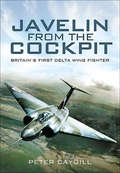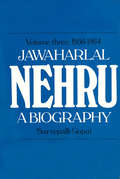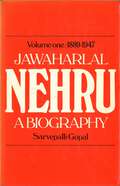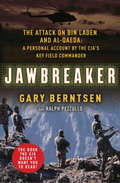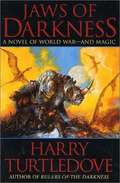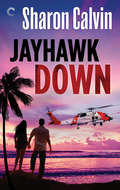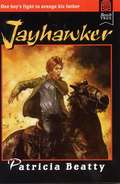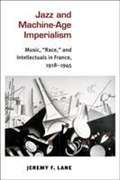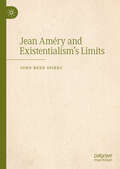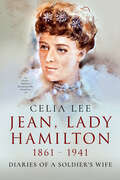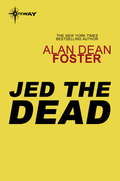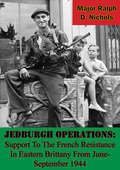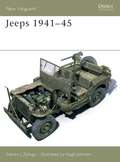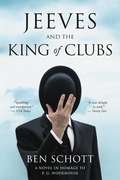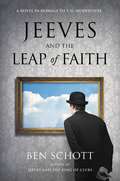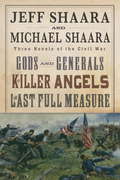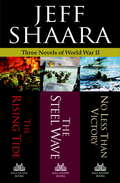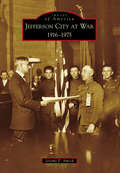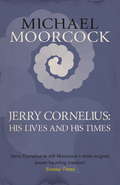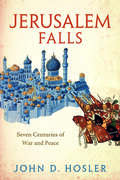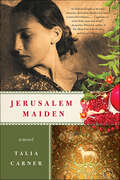- Table View
- List View
Javelin from the Cockpit: Britain's First Delta Wing Fighter
by Peter CaygillAn in-depth history of this RAF twin-engined interceptor, including firsthand accounts from those who flew it. The Gloster Javelin was designed to be a night/all-weather fighter. First introduced into RAF service in 1956 and retired in 1967, it was a large two-man, twin-engined and delta-winged aircraft. Although the Javelin was extremely rugged in construction, pilots were banned from spinning as test flights had proved it impossible to recover. During its service, nine different marks were introduced. At first it was armed with four wing-mounted cannon, but as technology advanced, air-to-air missiles replaced them. In its role as a night/all-weather fighter it bristled with Britain&’s latest radar and interception devices. This book includes development history, the different marks and their subtleties, radar and weapon capabilities, accidents and incidents—and many firsthand aircrew experiences of the type.
Jawaharlal Nehru: A Biography Volume 3 1956-1964
by Dr Sarvepalli GopalThe third and final volume of Sarvepalli Gopal’s biography of Jawaharlal Nehru covers the last eight years of his life and Prime Ministership. It deals with his efforts to sustain economic and social advance of the Indian people and not to lose hold of the principles of his foreign policy even while relations with China deteriorated, culminating the large scale aggression in both the western and eastern sections of the long boundary between the two countries.
Jawaharlal Nehru;a Biography Volume 1 1889-1947
by Dr Sarvepalli GopalAmong the few great statesmen to emerge in Asia, Jawaharal Nehru achieved a national metamorphosis in some ways even more astonishing than that of another towering patriarch, Mao Tse-tung. Not only did he wrest from the British their most prized and dearly loved Imperial possession and give his people independence, he brought his culturally rich yet economically improvised nation into the twentieth century as a force to be reasoned with. The first volume of Sarvepalli Gopal’s remarkable biographic, covering Nehru’s youth and ending with Independence in 1947, is written from first-hand knowledge of the man who served for ten years in the Ministry for External Affairs and from the unlimited access granted him by the Prime Minister Indira Gandhi to her father’s private papers.
Jawbreaker: The Attack on Bin Laden and Al Qaeda: A Personal Account by the CIA's Key Field Commander
by Gary Berntsen Ralph PezzulloIn Jawbreaker Gary Berntsen, until recently one of the CIA's most decorated officers, comes out from under cover for the first time to describe his no-holds-barred pursuit of Osama bin Laden and al-Qaeda.With his unique mix of clandestine knowledge and paramilitary training, Berntsen represents the new face of counterterrorism. Recognized within the agency for his aggressiveness, Berntsen, when dispatched to Afghanistan, made annihilating the enemy his job description.As the CIA's key commander coordinating the fight against the Taliban forces around Kabul, and the drive toward Tora Bora, Berntsen not only led dozens of CIA and Special Operations Forces, he also raised 2,000 Afghan fighters to aid in the hunt for bin Laden.In this first-person account of that incredible pursuit, which actually began years earlier in an East Africa bombing investigation, Berntsen describes being ferried by rickety helicopter over the towering peaks of Afghanistan, sitting by General Tommy Franks's side as heated negotiations were conducted with Northern Alliance generals, bargaining relentlessly with treacherous Afghan warlords and Taliban traitors, plotting to save hostages about to be used as pawns, calling in B-52 strikes on dug-in enemy units, and deploying a dizzying array of Special Forces teams in the pursuit of the world's most wanted terrorist. Most crucially, Berntsen tells of cornering bin Laden in the Tora Bora mountains--and what happened when Berntsen begged Washington to block the al-Qaeda leader's last avenue of escape.As disturbingly eye-opening as it is adrenaline-charged, Jawbreaker races from CIA war rooms to diplomatic offices to mountaintop redoubts to paint a vivid portrait of a new kind of warfare, showing what can and should be done to deal a death blow to freedom's enemies.CIA Commander Gary Berntsen on...His eyebrow-raising style:"Most CIA Case Officers advanced their careers by recruiting sources and producing intelligence, I took a more grab-them-by-the-neck approach...I operated on the principle that it was easier to seek forgiveness than ask for approval. Take risks, but make sure you're successful. Success, not good intentions, would determine my fate." Doing whatever it took: "I didn't just want to survive: I wanted to annihilate the enemy. And I didn't want to end up like one of my favorite historical characters--Alexander Burns...He was one of the first of more than 14,000 British soldiers to be wiped out by the Afghans in the First Afghan War. Like Burns before me, I was also an intelligence officer and spoke Persian. This was my second trip into Afghanistan, too. The difference, I told myself, was that Burns had been a gentleman and I would do whatever it took to win." Dealing with a Taliban official who controlled American hostages:"Tell him that if he betrays me or loses the hostages I'll spend every waking moment of my life hunting him down to kill him. Tell him I'm not like any American he has ever met." The capabilities of his Tora Bora spotter team:"Working nonstop, the four men directed strike after strike by B-1s, B-2s, and F-14s onto the al-Qaeda encampment with incredible precision. Somehow through the massive bureaucracy, thousands of miles of distance [and] reams of red tape...the U.S. had managed to place four of the most skilled men in the world above the motherlode of al-Qaeda, with a laser designator and communications system linked to the most potent air power in history...As I listened over our encrypted radio network, one word kept pounding in my head: revenge."Also available as a Random House AudioBookFrom the Hardcover edition.
Jaws of Darkness (World at War Series, Book #5)
by Harry Turtledoveharry turtledove's masterful story of a magical world's cataclysmic war-which began with Into the Darkness, Darkness Descending, Through the Darkness, and Rulers of the Darkness-continues in this, the fifth volume of the series. The grand conflict for control of the continent of Derlavai rages on, in a battle with all the drama and terror of the Second World War- only the bullets are beams of magical fire, the tanks and submarines are great lumbering beasts, and the fighters and bombers are dragons raining fire upon their targets. Yet hope may be dawning at last. The terrible onslaught of the conquering forces of Algarve- who power their battle magics with the life energy of their murdered victims-begins to founder as it runs into Habakkuk: a sorcerous ship of ice used by the embattled nations of Lagoas and Kuusamo to ferry their deadly dragons across the seas to strike at the very heart of Algarvian power. But though the tide has begun to turn, the conflict is far from over. The widely disdained Kaunians still struggle desperately to escape as the Algarvians kill them by the thousands-for life energy, but also simply for the crime of being Kaunian. And as the deaths of innocent civilians on both sides continue to feed the flames of war, those who have struggled to survive and preserve their freedom have only their passions to see them through
Jayhawk Down
by Sharon CalvinWhat appears to be a normal rescue mission goes horribly wrong...Caitlyn Stone has always wanted to be a helicopter pilot. Hard work and determination got her there, and now she's living the adrenaline-rushing good life, piloting Jayhawk helicopters for the US Coast Guard. Helping people is her life's work, and the risk is not only worth it, it's thrilling. But she never expected this kind of danger.When ER doctor and Army Reserve Black Hawk pilot Stillman Gray sees Caitlyn expertly land a Jayhawk during a raging storm, he has nothing but respect for the beautiful Coastie. But he's not the only one who's noticed her. A terrorist is looking to hijack a helicopter, and he's decided Caitlyn is the perfect target.Caitlin's past has taught her that the only thing a man in uniform can guarantee is disappointment. But when what appears to be a normal rescue mission goes horribly wrong, she'll need to push aside memories of heartbreak and trust her military man enough to let him save her.For more Gulf Coast Rescue, donâ TMt miss A Dangerous Leap, available now!77,250 words
Jayhawker
by Patricia Beatty Stephen Marchesi Patricia B. UhrWith the United States on the verge of civil war, Elijah Tully and his father ride out of Kansas as Jayhawkers, guerrilla fighters against slavery. After his father is killed, Lije goes undercover among the proslavery bushwhackers. Swept into a grisly raid, Lije unexpectedly stands face-to-face with his father's killer -- but is vengeance as simple as he once thought?
Jazz and Machine-Age Imperialism: Music, "Race," and Intellectuals in France, 1918-1945
by Lane Jeremy F.Jeremy F. Lane’s Jazz and Machine-Age Imperialism is a bold challenge to the existing homogenous picture of the reception of American jazz in world-war era France. Lane’s book closely examines the reception of jazz among French-speaking intellectuals between 1918 and 1945 and is the first study to consider the relationships, sometimes symbiotic, sometimes antagonistic, between early white French jazz critics and those French-speaking intellectuals of color whose first encounters with the music in those years played a catalytic role in their emerging black or Creole consciousness. Jazz’s first arrival in France in 1918 coincided with a series of profound shocks to received notions of French national identity and cultural and moral superiority. These shocks, characteristic of the era of machine-age imperialism, had been provoked by the first total mechanized war, the accelerated introduction of Taylorist and Fordist production techniques into European factories, and the more frequent encounters with primitive “Others” in the imperial metropolis engendered by interwar imperialism. Through close readings of the work of early white French jazz critics, alongside the essays and poems of intellectuals of color such as the Nardal sisters, Léon-Gontran Damas, Léopold Sédar Senghor, and René Ménil, Jazz and Machine-Age Imperialism highlights the ways in which the French reception of jazz was bound up with a series of urgent contemporary debates about primitivism, imperialism, anti-imperialism, black and Creole consciousness, and the effects of American machine-age technologies on the minds and bodies of French citizens.
Jean Améry and Existentialism’s Limits
by John Reed SpiersThis book provides an in-depth analysis of the influences and impact of philosopher, writer and public intellectual, Jean Améry. Améry&’s writing is often analysed in terms of his experiences as a Jew in Austria during WWII which saw him stripped of his identity, driven into exile, and dehumanised in torture and the death camps. Despite the increasing interest in the philosophical, ethical, and literary dimensions of Améry&’s thought, little research discusses his relationship with the most important intellectual discovery of his life: existentialism. This book contributes to and expands upon recent engagements with Améry&’s work by situating him within the existential tradition and discussing his writing within the context of his peers and influences. John Reed Spiers argues that reading Améry in the context of the existential tradition contributes to a greater appreciation of his importance as a writer reflecting on the human condition, broadening the Anglophone reception of his work beyond Holocaust Studies, trauma studies, and victimology.
Jean, Lady Hamilton, 1861–1941: Diaries of A Soldier's Wife
by Celia Lee“A pleasure to read. It’s predominantly about the life of Jean Hamilton’s husband Ian as an officer during the Great War and life for both before and after.” —UK HistorianJean, Lady Hamilton’s diaries remained forgotten and hidden in the Liddell Hart Centre for Military Archives, King’s College, London, for fifty years. The story begins with the young couples’ wedding, a dazzling bride, Jean Muir, marrying a star-struck Major Ian Hamilton. The daughter of the millionaire businessman Sir John Muir, Jean had all the money whilst Hamilton was penniless.Having spent their early married years in India, the Hamiltons returned and set up house in the prestigious Hyde Park area of London, also eventually buying Lullenden Manor, East Grinstead, that they purchased as a country home from Winston Churchill when he could no longer afford it. Churchill in particular was like family in the Hamiltons’ home; he used to go there and practice his speeches, and painted alongside Jean to whom he sold his first painting.Jean chronicled Ian’s long army career that culminated in the Gallipoli campaign in 1915. The failure there ended her husband’s distinguished career and almost ended Churchill’s as he had to leave his job as First Lord of the Admiralty. This account is Lady Hamilton’s “attempt to chronicle her husband’s life as a top-flight but penniless soldier, this at a time when young Winston Churchill . . . was emerging from his own distinguished and very colourful military career to enter a life of politics . . . Jean Hamilton is one of those larger than life people of whom we know very little until a book such as Celia’s comes along” (Books Monthly).
Jed the Dead
by Alan Dean FosterHis whole life, Ross Ed Hager had never set foot outside of Texas and Louisiana. Now, heading for the coast, he expected too see things he had never seen before.He did not expect to see a three-eyed, six-limbed, alien corpse...
Jedburgh Operations: Support To The French Resistance In Eastern Brittany From June-September 1944
by Major Ralph D. NicholsSpecially trained teams, known as Jedburghs, were inserted into France in conjunction with Operation "Overlord," to help liberate it from German occupation. The Jedburghs were three-man allied teams, comprised of two commissioned officers, (at least one French) and a non-commissioned officer in charge of the radio (wireless telegraphy). All Jedburghs were volunteers. They received highly specialized training in guerrilla warfare. Jedburghs served in harm's way, deep behind enemy lines. They were subordinate to the Supreme Headquarters Allied Expeditionary Force (SHAEF), and its commander, General Dwight D. Eisenhower. Their covert mission in Operation "Overlord" helped pave the way for the liberation of France, and ultimately resulted in a campaign to free Europe from Nazi rule.This study explores the origins, purpose, training and missions of the Jedburghs. I will examine the actual operations of seven Jedburgh teams in Eastern Brittany. Their actions and effectiveness will be compared with operations of other Jedburgh teams.
Jeeps 1941-45
by Hugh Johnson Steven ZalogaThe jeep was the most famous military vehicle of World War II, and its name has become synonymous with a whole class of military and civilian all-terrain vehicles. The jeep originated in a prewar US Army requirement for a simple, inexpensive, and robust vehicle for basic utility chores. Its simple design proved to be adaptable to a host of military tasks including use as a scout vehicle, battlefield ambulance, communications vehicle, and staff car. This book, covering "the savior of World War II", focuses on the design and development of this versatile vehicle used on nearly every front of World War II. From the Trade Paperback edition.
Jeeves and the King of Clubs: A Novel in Homage to P.G. Wodehouse
by Ben SchottWhat ho! A new Jeeves and Wooster novel, penned in homage to P.G. Wodehouse by bestselling author Ben Schott--in which literature's favorite gentleman and his gentleman's personal gentleman become spies in service to the Crown.The misadventures of P.G. Wodehouse's Bertie Wooster and his incomparable valet, Jeeves, have delighted audiences for nearly a century. Now, bestselling author Ben Schott brings this odd couple back to life in a madcap new adventure that is full of the hijinks, entanglements, imbroglios, and Wodehousian wordplay that readers love. And, by Jove, there's a hook!In this escapade, the Junior Ganymede Club (Jeeves's association of butlers and valets) is revealed to be an arm of the British intelligence service. Jeeves must ferret out a Fascist spy, and only his hapless employer can help. Unfolding in the background are school-chum capers, affairs of the heart, drawing-room escapades, antics with aunts, and sartorial set-tos. Energized by Schott's effervescent prose, Jeeves and the King of Clubs delights longtime fans and introduces a new audience to the comic joys of these beloved characters.
Jeeves and the Leap of Faith: A Novel in Homage to P. G. Wodehouse
by Ben SchottJeeves and Wooster return in a new espionage caper full of japes, high jinks, and jiggery-pokery in a series that is &“impossible to read without grinning idiotically&” (Evening Standard). The Drones club&’s in peril. Gussie&’s in love. Spode&’s on the war path. Oh, and His Majesty&’s Government needs a favor . . . I say! It&’s a good thing Bertie&’s back, what? In his eagerly anticipated sequel to Jeeves and the King of Clubs, Ben Schott leads Jeeves and Wooster on another elegantly uproarious escapade. From the mean streets of Mayfair to the scheming spires of Cambridge, we encounter a joyous cast of characters: chiseling painters and criminal bookies, eccentric philosophers and dodgy clairvoyants, appalling poets and pocket dictators, vexatious aunts and their vicious hounds. But that&’s not all: Who is ICEBERG, and why is he covered in chalk? Why is Jeeves reading Winnie-the-Pooh? What is seven across and eighty-five down? How do you play Russian Roulette at The Savoy? These questions, and more, are answered in Jeeves and the Leap of Faith — an homage to P.G. Wodehouse, authorized by his estate, and essential reading for fans of The Master. Tinkety-tonk!
Jeff Shaara and Michael Shaara: Three Novels of the Civil War
by Jeff Shaara Michael ShaaraMichael Shaara reinvented the war novel with his Pulitzer Prize-winning masterpiece of Gettysburg, The Killer Angels. Jeff Shaara propelled his father's legacy to new heights with a series of centuries-spanning New York Times bestsellers. Together at last in eBook form, this volume assembles three Civil War novels from America's first family of military fiction: Gods and Generals, The Killer Angels, and The Last Full Measure. Gods and Generals traces the lives, passions, and careers of the great military leaders--Thomas "Stonewall" Jackson, Winfield Scott Hancock, Joshua Chamberlain--from the gathering clouds of war. The Killer Angels re-creates the fight for America's destiny in the Battle of Gettysburg, the four most bloody and courageous days of our nation's history. And The Last Full Measure brings to life the final two years of the Civil War, chasing the escalating conflict between Robert E. Lee and Ulysses S. Grant--complicated, heroic, and deeply troubled men--through to its riveting conclusion at Appomattox. Contains a preview Jeff Shaara's highly anticipated new novel of the Civil War, A Blaze of Glory.
Jeff Shaara's Civil War Battlefields: Discovering America's Hallowed Ground
by Jeff ShaaraTRAVEL THROUGH A PIVOTAL TIME IN AMERICAN HISTORY. Jeff Shaara, America's premier Civil War novelist, gives a remarkable guided tour of the ten Civil War battlefields every American should visit: Shiloh, Antietam, Fredericksburg/Chancellorsville, Gettysburg, Vicksburg, New Market, Chickamauga, the Wilderness/Spotsylvania, Cold Harbor, and Petersburg/Appomattox. Shaara explores the history, the people, and the places that capture the true meaning and magnitude of the conflict and provides* engaging narratives of the war's crucial battles* intriguing historical footnotes about each site* photographs of the locations-then and now* detailed maps of the battle scenes* fascinating sidebars with related points of interest. From Antietam to Gettysburg to Vicksburg, and to the many poignant destinations in between, Jeff Shaara's Civil War Battlefields is the ideal guide for casual tourists and Civil War enthusiasts alike. From the Trade Paperback edition.
Jeff Shaara: Three Novels of World War II
by Jeff ShaaraJeff Shaara has written vivid, perceptive portraits of America's wars that have thrilled and mesmerized readers across generations. Collected for the first time in this eBook volume are Jeff Shaara's epic New York Times bestselling novels of World War II: The Rising Tide, The Steel Wave, and No Less Than Victory. As the United States wades into the shifting tides of war, Shaara details every move--the tank battles along the Mediterranean coast, the audacious invasion at Omaha Beach, the deadly final spasms of the Third Reich. He brings to life such figures as Eisenhower and Patton, as well as the courageous men on the front lines of battle. On full display throughout is the inimitable style and striking narrative range that have made Jeff Shaara such an esteemed and essential chronicler of the American age. Contains an excerpt from Jeff Shaara's acclaimed new novel of World War II in the Pacific, The Final Storm, which Booklist called "extraordinarily evocative."
Jefferson City at War: 1916-1975 (Images of America)
by Jeremy P. AmickJefferson City has a unique and enduring legacy of brave individuals banding together to answer the nation's call to arms. The Missouri National Guard's Company L, 2nd Infantry mobilized in support of the Mexican Border War in 1916 and later federalized for deployment during the Great War. Local youth scrambled to recruiting stations for a chance to join in the fray against Germany and Japan during World War II. Later, brave residents found themselves in the Korea peninsula or the jungles of Vietnam. It is clear that the Jefferson City community has a history of embracing the groundswell of patriotic pride that emerges in support of those who chose to fight--and sometimes lay down their lives--for a cause they view as greater than themselves.
Jena to Eylau: The Disgrace and the Redemption of the Old-Prussian Army
by C. F. Atkinson Field Marshal Freiherr Colmar Von der GoltzThis ebook is purpose built and is proof-read and re-type set from the original to provide an outstanding experience of reflowing text for an ebook reader. Field-Marshal Von der Goltz was one of the most widely read military authors of the late 19th century; his ideas and theories of the "Nation in Arms" were to be brought into practice during the First World War, during which he served. His wide military experience ranged from the practical during the 1866 Bohemian campaign to the Franco-Prussian war of 1870-71, before moving on to staff and teaching posts. He authored many works during his time as part of the historical section of the Prussian General Staff, mostly about the theory of war and the victorious campaigns of the 1870-71. A fiercely patriotic man, he was inspired to write about the great defeat of the Prussian army of 1806 as part history and part catharsis. His work is supremely detailed and his great critical military mind avoids bias in favour of the Prussians. This title is acclaimed as a military classic along with his "Von Rossbach bis Jena und Auerstädt" and "Nation in Arms". Title - Jena to Eylau Sub-Title - The Disgrace and the Redemption of the Old-Prussian Army Author -- Field Marshal Freiherr Colmar Von der Goltz (1843-1916) Translator -- C. F. Atkinson (????-????) Text taken, whole and complete, from the edition published in 1913, London, by Kegan Paul, Trench, Trübner & Co. Ltd. Original - xv and 340 pages. Illustrations - The maps cannot be reproduced with this volume as they are A3.
Jeopardy: An Anthology
by Linda HowardTwo fan-favorite tales of romance and suspense from New York Times bestselling author Linda Howard A Game of Chance On the trail of a vicious criminal, agent Chance Mackenzie finds the perfect bait for his trap: the target's daughter, Sunny Miller. Chance makes himself the only man she can trust, and then arranges for her elusive father to find out about them. But Chance doesn't know that Sunny has her own reasons for hiding from her father. His deception puts them in danger of losing everything-including their hearts. Loving Evangeline There's no doubt that the woman calling herself Evie Shaw is the key to the high-tech conspiracy that's threatening Robert Cannon's computer company-and he means to take her down personally. But trailing her into the heart of a long, hot Southern summer, he finds himself questioning everything he thought he knew. Can she really be innocent? Or are Robert's feelings clouding his judgment when it comes to the woman who has to be guilty as sin?ilty as sin?
Jerry Cornelius: His Lives and His Times
by Michael MoorcockJerry Cornelius is an English assassin, physicist, rock star, and messiah to the Age of Science. Mainstay of the infamous and influential magazine NEW WORLDS and star of some of Moorcock's most celebrated novels, here are the short stories which made his name. Set in a shifting, fluid version of the counter-culture 1960s, the adventures of Jerry Cornelius were among the most prominent 'New Wave' SF books. Jerry Cornelius is one of the most remarkable and distinctive characters in Moorcock's work, and his time-travelling, trippy and bizarre adventures are must-reads.Contains a wide selection of Jerry Cornelius short stories, including THE NATURE OF THE CATASTROPHE, THE ENTROPY CIRCUIT, THE DELHI DIVISION and many more.
Jerry: The Adventures of an Army Dog
by S. P. MeekWhen Jerry tries to join the Army, he is not welcome. But after several unsuccessful tries to lose him, he is accepted. When he saves Corporal Murphy from a rattlesnake, his place in the 89th Ordnance Company is secure. He becomes a Corporal. In each of these stories, Jerry proves himself a soldier and a hero. And together, he and Corporal Murphy take the Army by storm.
Jerusalem Falls: Seven Centuries of War and Peace
by John D. HoslerThe first full account of the medieval struggle for Jerusalem, from the seventh to the thirteenth century The history of Jerusalem is one of conflict, faith, and empire. Few cities have been attacked as often and as savagely. This was no less true in the Middle Ages. From the Persian sack in 614 through the bloody First Crusade and beyond, Jerusalem changed hands countless times. But despite these horrific acts of violence, its story during this period is also one of interfaith tolerance and accord. In this gripping history, John D. Hosler explores the great clashes and delicate settlements of medieval Jerusalem. He examines the city&’s many sieges and considers the experiences of its inhabitants of all faiths. The city&’s conquerors consistently acknowledged and reinforced the rights of those religious minorities over which they ruled. Deeply researched, this account reveals the way in which Jerusalem&’s past has been constructed on partial histories—and urges us to reckon with the city&’s broader historical contours.
Jerusalem Maiden: A Novel
by Talia Carner“Talia Carner is a skillful and heartfelt storyteller who takes the reader on journey of the senses, into a world long forgotten.”—Jennifer Lauck, author of Blackbird“Exquisitely told, with details so vivid you can almost taste the food and hear the voices….A moving and utterly captivating novel that I will be thinking about for a long, long time.”—Tess Gerritsen, author of The Silent Girl“Talia Carner’s story captivates at every level, heart and mind.”—Jacquelyn Mitchard, author of The Deep End of the OceanThe poignant, colorful, and unforgettable story of a young woman in early 20th-century Jerusalem who must choose between her faith and her passion, Jerusalem Maiden heralds the arrival of a magnificent new literary voice, Talia Carner. In the bestselling vein of The Red Tent, The Kite Runner, and A Thousand Splendid Suns, Jerusalem Maiden brilliantly evokes the sights and sounds of the Middle East during the final days of the Ottoman Empire. Historical fiction and Bible lovers will be captivated by this thrilling tale of a young Jewish woman during a fascinating era, her inner struggle with breaking the Second Commandment, and her ultimate transcendence through self-discovery.
